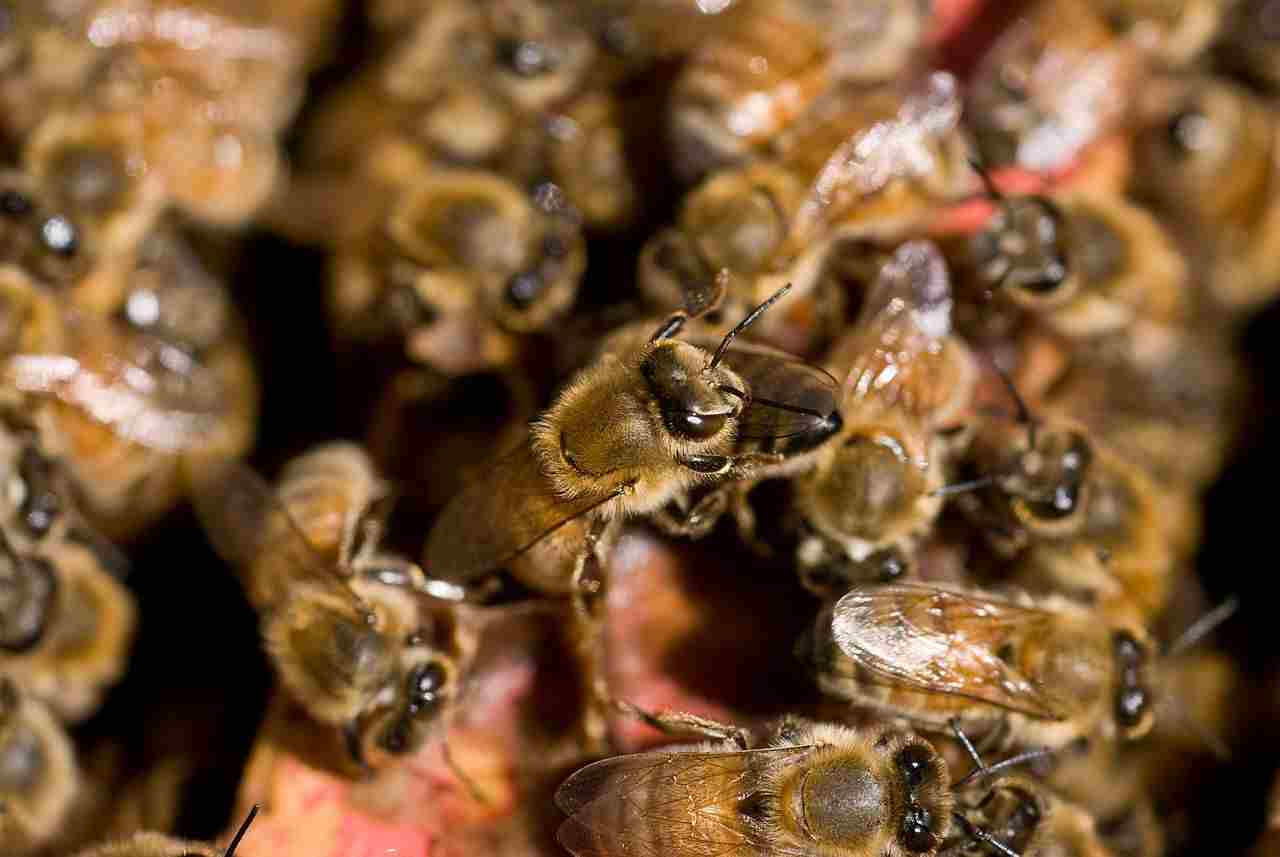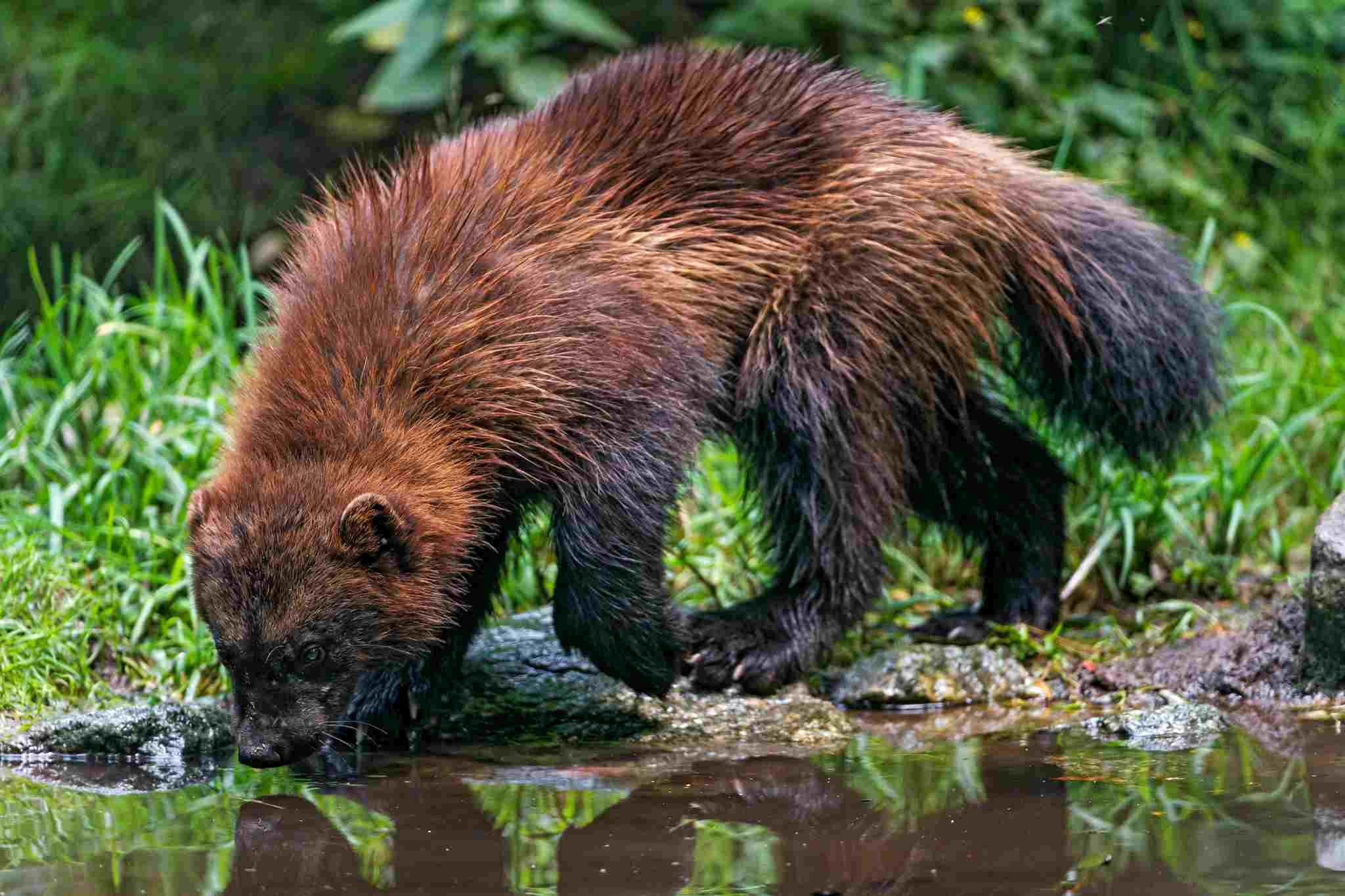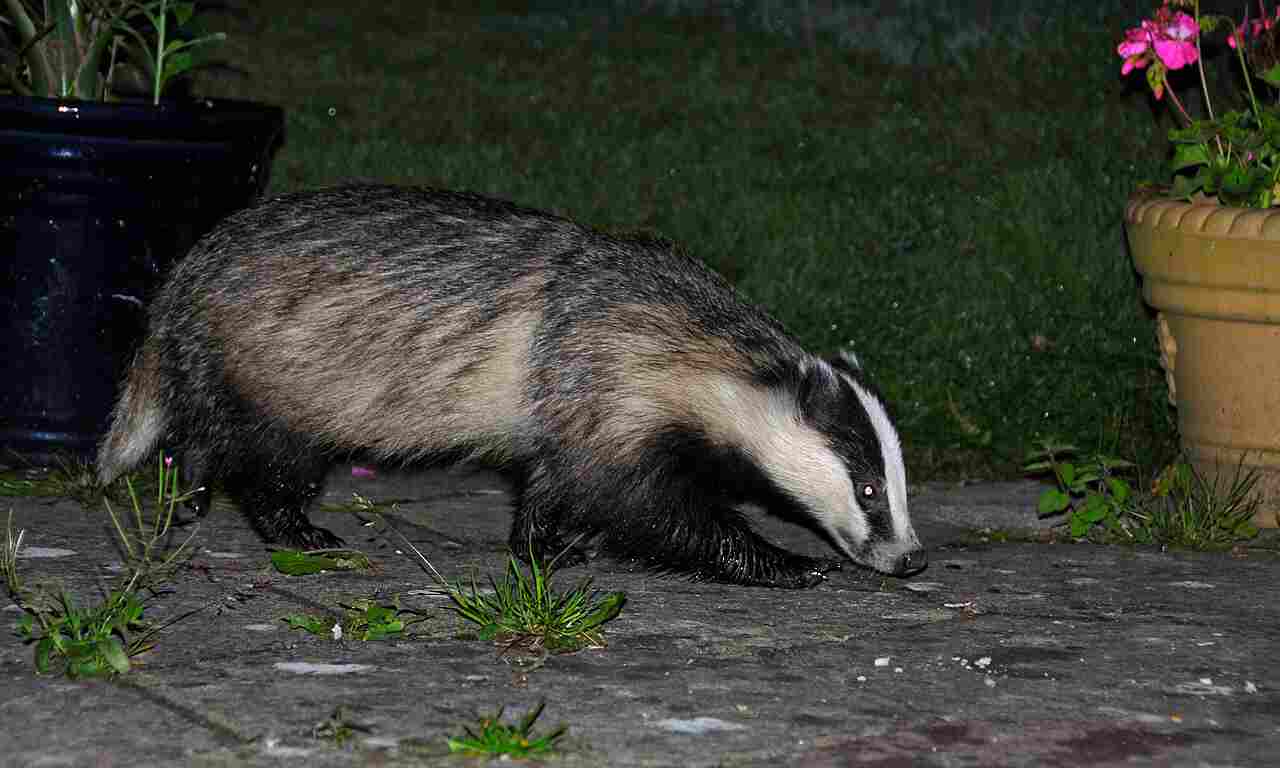What is a Beekeeper Called? Title and Role of Beekeeper Discussed
Beekeepers are often referred to as apiarists or apiculturists, which are terms derived from the practice of apiculture and the genus of honeybees, known as Apis. These words highlight the beekeeper’s role in managing and caring for bees. Beekeepers play a crucial role in the well-being of bees, providing them with shelter and medication to ensure their health.
They also monitor the activities of the bees to assess their overall productivity and health. Beekeepers are involved in the controlled production of honey, ensuring that it is harvested in a regulated manner. They also contribute to the commercialization of honeybee products, such as honey and beeswax.
What is Another Word for Beekeeper?
Another word for beekeeper is “apiculturist” or “apiarist.” These terms are derived from the practice of apiculture, which refers to the keeping and management of bees. The word “apiculturist” emphasizes the focus on bees, while “apiarist” highlights the role of the beekeeper in maintaining an apiary, which is a collection of beehives.
Beekeepers, or apiculturists/apiarists, play a crucial role in the care and management of bees. They provide shelter and medication to the bees, ensuring their well-being and health. Monitoring the activities of the bees is another important task, as it allows the beekeeper to assess the overall health and productivity of the colony.
In addition to caring for the bees, beekeepers are involved in the controlled production of honey. They ensure that the honey is harvested in a regulated manner, maintaining the balance between the needs of the bees and the desire for honey production. Beekeepers also play a role in the commercialization of honeybee products, including honey, beeswax, and other bee-related products.
Overall, beekeepers, or apiculturists/apiarists, are dedicated individuals who work diligently to care for bees and ensure the sustainability of bee colonies. Their role is vital in supporting the health of pollinators and the production of honey and other bee-related products.
What Does a Beekeeper Do?
Things a beekeeper does include; setting up beehives, provision of shelter and medication to bees, monitoring their activities, and producing honey in a regulated manner. They are also involved in the marketing of this honey, alongside other products from bee colonies
1). Setting Up Beehives
Setting up beehives is a crucial aspect of a beekeeper’s role. It involves creating a suitable environment for the bees to thrive and produce honey. This process requires careful planning and attention to detail.
The first step in setting up beehives is selecting an appropriate location. Beekeepers need to find a site that offers ample forage for the bees, away from potential sources of contamination such as pesticides. It is also important to consider the accessibility of the site for maintenance and monitoring purposes.
Once a suitable location is identified, the beekeeper needs to assemble the necessary equipment. This includes the beehive boxes, frames, and foundation. These components provide the structure for the bees to build their comb and store honey. It is essential to ensure that the equipment is clean and in good condition to prevent any potential harm to the bees.
After assembling the equipment, the beekeeper can introduce the bees to their new home. This can be done by purchasing a package of bees or by capturing a swarm. Care must be taken during this process to minimize stress on the bees and ensure their safe transfer into the hive.
Once the bees are settled in the hive, the beekeeper needs to monitor their activities regularly. This involves checking for signs of disease or pests, ensuring that the bees have enough food and water, and maintaining the overall health of the colony. Regular inspections allow the beekeeper to address any issues promptly and prevent potential problems from escalating.
2). Provision of Shelter and Medication to Bees
The provision of shelter and medication to bees is a crucial role that beekeepers undertake to ensure the health and well-being of their colonies. Beekeepers play a vital role in creating a safe and comfortable environment for the bees to thrive and produce honey. This section will explore the importance of shelter and medication in beekeeping.
Shelter is essential for bees as it protects them from the elements and provides a secure space for them to build their hives. Beekeepers carefully select and maintain suitable beehive structures that offer protection from extreme weather conditions, predators, and other potential threats. These structures, such as wooden beehive boxes, provide insulation and ventilation to regulate the temperature and humidity inside the hive. By providing adequate shelter, beekeepers ensure that the bees have a stable and conducive environment for their activities.
In addition to shelter, beekeepers also play a crucial role in providing medication to bees. Bees can be susceptible to various diseases and pests that can harm their health and productivity. Beekeepers monitor their colonies regularly for signs of diseases such as Varroa mites or American foulbrood and take appropriate measures to prevent or treat these issues. This may involve the use of organic or chemical treatments, depending on the beekeeper’s preferences and local regulations. By administering medication when necessary, beekeepers help maintain the overall health and vitality of their bee colonies.
The provision of shelter and medication to bees requires beekeepers to stay informed about the latest research and best practices in beekeeping. They need to be knowledgeable about the various diseases and pests that can affect bees and understand the appropriate treatment options. Beekeepers may also collaborate with local beekeeping associations or experts to stay updated on emerging issues and advancements in bee health management.
3). Monitoring of Bees’ Activities
Monitoring the activities of bees is a crucial role that beekeepers undertake to ensure the health and productivity of their colonies. By closely observing and tracking the behavior and performance of the bees, beekeepers can identify any issues or changes that may require attention. This section will explore the importance of monitoring bees’ activities and the methods used by beekeepers to gather valuable information about their colonies.
One of the key aspects of monitoring bees’ activities is observing their foraging behavior. Beekeepers keep a close eye on the bees as they leave and return to the hive, noting the types of flowers they visit and the amount of pollen and nectar they bring back. This information helps beekeepers assess the availability of food sources and the overall strength and vitality of the colony. By monitoring foraging activities, beekeepers can make informed decisions about hive management and ensure that the bees have access to a diverse and abundant food supply.
Another important aspect of monitoring is assessing the brood development within the hive. Beekeepers carefully inspect the frames inside the hive to check for the presence of eggs, larvae, and capped brood. This allows them to determine the health and reproductive status of the queen bee and ensure that the colony is growing and thriving. Monitoring brood development also helps beekeepers identify any signs of disease or pest infestation that may require intervention.
Beekeepers also monitor the overall population and behavior of the bees within the hive. They observe the bees’ activity levels, the presence of any unusual behavior or aggression, and the overall cleanliness and organization of the hive. These observations provide valuable insights into the overall health and well-being of the colony.
To gather this information, beekeepers use various tools and techniques such as hive inspections, record-keeping, and the use of technology like hive monitoring systems. Hive inspections involve carefully opening the hive and examining the frames and bees. Beekeepers record their observations and findings to track the progress of the colony over time. Hive monitoring systems, such as temperature and humidity sensors, provide real-time data on the hive’s conditions, allowing beekeepers to monitor the colony remotely and detect any abnormalities.
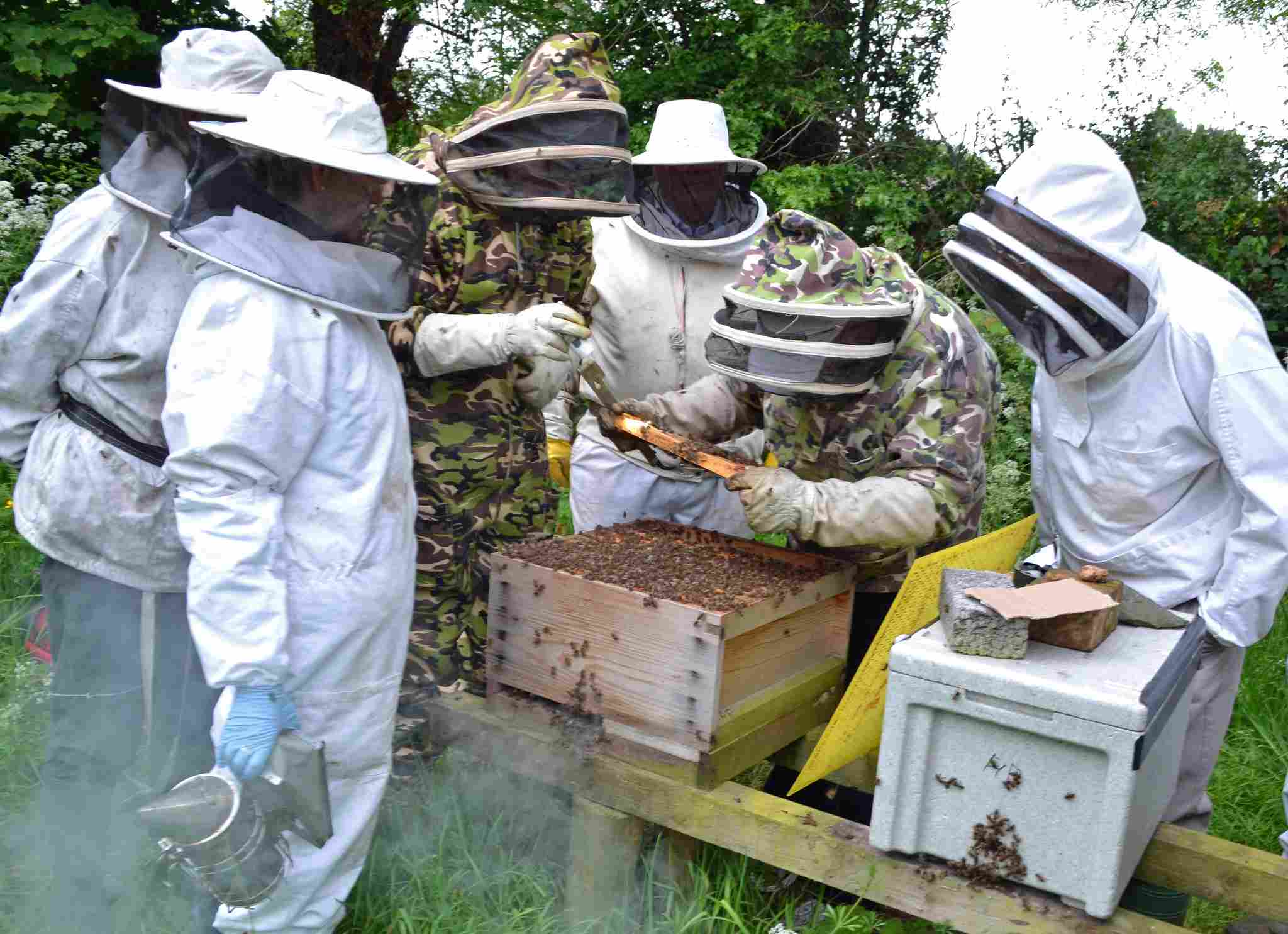
4). Controlled Honey Production
Controlled honey production is a vital role that beekeepers play in ensuring the availability of high-quality honey. It involves managing the honey production process from start to finish, ensuring that the bees have access to suitable forage and extracting honey in a careful and controlled manner. This section will explore the importance of controlled honey production and the steps beekeepers take to ensure a successful harvest.
One of the key aspects of controlled honey production is providing the bees with a diverse and abundant source of nectar. Beekeepers carefully select the location of their hives to ensure that the bees have access to a variety of flowering plants throughout the year. This helps to create a rich and flavorful honey that reflects the local flora. By monitoring the availability of nectar sources and managing the placement of hives, beekeepers can optimize honey production.
To extract honey, beekeepers use specialized equipment such as honey extractors and uncapping knives. The process begins by removing the frames from the hive and carefully uncapping the wax seals that cover the honeycomb cells. The frames are then placed in the honey extractor, which uses centrifugal force to spin the honey out of the comb. The extracted honey is then filtered to remove any impurities before being bottled for sale or personal use.
During the honey extraction process, beekeepers take care to minimize disruption to the bees and their colony. They ensure that enough honey is left behind for the bees to sustain themselves through the winter months. This careful management helps to maintain the health and productivity of the colony while also ensuring a sustainable honey harvest.
By practicing controlled honey production, beekeepers can provide consumers with a consistent and high-quality product. They play a crucial role in preserving the natural flavors and nutritional benefits of honey while also supporting the health and well-being of honeybee colonies. Through their dedication and expertise, beekeepers contribute to the sustainable production of this beloved natural sweetener.
5). Commercialization of Honeybee Products
Commercialization of honeybee products is a crucial role and function of beekeepers. It involves the process of marketing and selling the various products that bees produce, such as honey, beeswax, propolis, and royal jelly. Beekeepers play a vital role in bringing these natural and nutritious products to consumers.
One of the main products that beekeepers commercialize is honey. Honey is a versatile and delicious natural sweetener that is in high demand. Beekeepers carefully extract honey from the hives using specialized equipment, ensuring that the process is done in a controlled and sustainable manner. They then package and label the honey for sale, either directly to consumers or through local markets, stores, or online platforms.
In addition to honey, beekeepers also commercialize other honeybee products. Beeswax, for example, is used in various industries, including cosmetics, candles, and woodworking. Beekeepers collect beeswax from the hives and sell it in the form of blocks or pellets to manufacturers and artisans. Propolis, a resinous substance collected by bees from tree buds, is known for its medicinal properties. Beekeepers extract and process propolis, making it available for sale as a natural health product. Royal jelly, a nutrient-rich substance produced by worker bees, is also commercialized by beekeepers for its potential health benefits.
Beekeepers play a crucial role in ensuring the quality and safety of these honeybee products. They follow strict guidelines and regulations to maintain the integrity of the products and ensure that they meet the highest standards. This includes proper labeling, adherence to food safety regulations, and transparent communication with consumers about the origin and production methods of the products.
Through the commercialization of honeybee products, beekeepers not only contribute to the local economy but also promote the importance of bees and their role in pollination and ecosystem health. By supporting beekeepers and purchasing their products, consumers can enjoy the natural goodness of honey and other bee products while also supporting the sustainability of beekeeping practices.
How Do You Become a Beekeeper?
1). Consider Local Farming Regulations
Before embarking on your journey to become a beekeeper, it is crucial to consider the local farming regulations in your area. Understanding and adhering to these regulations will ensure that you are operating within the legal framework and promoting the well-being of both your bees and the environment.
One important aspect of local farming regulations is obtaining the necessary permits or licenses to keep bees. Some areas may require beekeepers to register their hives or obtain specific permits to ensure the safety and health of the community. By familiarizing yourself with these requirements, you can avoid any potential legal issues and ensure a smooth beekeeping experience.
Additionally, local farming regulations may also dictate the location and placement of beehives. Certain areas may have restrictions on the proximity of hives to residential areas or public spaces. It is essential to consider these regulations to prevent any conflicts with neighbors or potential hazards to the public.
Moreover, local regulations may also address issues such as hive density, hive management practices, and disease control measures. These regulations are designed to protect the health of the bee population and prevent the spread of diseases that can harm both bees and other pollinators. By following these guidelines, you contribute to the overall well-being of the local ecosystem.
To ensure compliance with local farming regulations, it is advisable to reach out to local beekeeping associations or agricultural authorities. They can provide you with specific information regarding the regulations in your area and offer guidance on how to navigate them successfully.
2). Explore Self-Education or Certification Options
While formal certificates are not necessary to become a beekeeper, they can be beneficial for those who want to be recognized as a master beekeeper. Acquiring certifications can provide you with a deeper understanding of beekeeping practices and techniques, as well as enhance your credibility within the beekeeping community.
One option to explore is reaching out to other experienced beekeepers. They can offer valuable insights and guidance based on their own experiences. Connecting with beekeeping associations or joining local beekeeping clubs can provide opportunities to learn from seasoned beekeepers and participate in workshops or training programs. These informal education options can help you gain practical knowledge and build a network of fellow beekeepers who can offer support and advice along your beekeeping journey.
Self-education is another avenue to consider. There are numerous resources available, such as books, online courses, and instructional videos, that can provide comprehensive information on beekeeping. These resources often cover topics ranging from hive management and bee behavior to honey extraction and disease prevention. By dedicating time to self-education, you can develop a solid foundation of knowledge and skills necessary for successful beekeeping.
When exploring self-education or certification options, it is important to choose resources and programs that are reputable and reliable. Look for recommendations from experienced beekeepers or consult beekeeping associations for trusted sources. Additionally, consider your learning style and preferences. Some individuals may thrive in a structured classroom setting, while others prefer self-paced online courses or hands-on workshops.
Remember, the goal of exploring self-education or certification options is to enhance your understanding of beekeeping and improve your beekeeping practices. By investing time and effort into furthering your knowledge, you can become a more confident and skilled beekeeper, ensuring the well-being of your bees and the success of your beekeeping endeavors.
3). Establish Suitable Apiary Site
When it comes to establishing a suitable apiary site for your beekeeping project, there are a few key factors to consider. The location of your apiary should be chosen carefully, taking into account the needs of your bees and the goals of your beekeeping endeavor.
First and foremost, the size of the apiary site will depend on the number of bees you plan to keep and the scale of your farming operation. Whether you have a large or small apiary, or even just a corner of your backyard, it is important to ensure that the space is sufficient to accommodate your bees comfortably.
In selecting the location, it is crucial to consider the most important goals of your beekeeping project. Are you primarily focused on honey production, or are you also interested in pollination services? If honey production is your main objective, you may want to choose a site with an abundance of nectar-producing flowers nearby. On the other hand, if pollination services are your priority, selecting a location near agricultural fields or gardens would be beneficial.
Additionally, the apiary site should provide a suitable environment for the bees. It should be sheltered from strong winds and have access to a water source, such as a pond or a nearby stream. Bees require water for hydration and to regulate the temperature within the hive.
Lastly, it is important to communicate your intentions with neighbors and local authorities. Some areas may have regulations or restrictions on beekeeping, so it is essential to ensure that you are in compliance with any local farming regulations.
Establishing a suitable apiary site is a crucial step in becoming a beekeeper. By carefully considering the needs of your bees and aligning them with your goals, you can create an environment that promotes the health and productivity of your bee colonies. Remember to keep your language clear and simple, ensuring that the information is easily understood by aspiring beekeepers of all levels of experience.
4). Order Bees
Ordering bees is a crucial step in becoming a beekeeper. Whether you are starting small or planning to have a large-scale farming operation, obtaining honeybees is essential for establishing your apiary. There are a few key factors to consider when ordering bees, and it is important to communicate your needs clearly to ensure you receive healthy and productive colonies.
One option for obtaining bees is to purchase them from local beekeepers. This can be advantageous as the bees are already acclimated to the local climate and conditions. Local beekeepers can provide you with bees on combs, which means the bees are already established on frames with honeycomb. This makes it easier for you to transfer the bees into your own hives.
The number of bees you order will depend on the intended scale of your farming operation. It is important to assess the capacity of your apiary site and determine how many colonies it can accommodate comfortably. Ordering the appropriate number of bees will help ensure that your colonies thrive and have enough space to grow.
When ordering bees, it is crucial to use clear and simple language to convey your requirements. Provide the bee supplier with information about your location, the number of colonies you need, and any specific preferences you may have. This will help the supplier select the right bees for your needs and ensure a smooth transaction.
Remember, ordering bees is just one step in the process of becoming a beekeeper. Once you receive your bees, you will need to properly introduce them to their new hives and provide them with the necessary care and attention.
5). Order and Assemble Equipment
Ordering and assembling the necessary equipment is a crucial step in becoming a beekeeper. Along with obtaining bees, having the right tools and protective gear is essential for the successful management of your apiary. It is important to approach this step with clear and simple language, ensuring that you have everything you need to start your beekeeping journey.
When ordering equipment, there are several key items to consider. First and foremost, you will need beehives. These are the structures where your bees will live and produce honey. Beehives come in different styles, such as Langstroth or top-bar hives, and you can choose the one that best suits your needs and preferences.
In addition to beehives, you will also need frames and foundation. Frames provide support for the honeycomb and make it easier for you to inspect and manage your colonies. Foundation, on the other hand, serves as a guide for the bees to build their honeycomb. Ordering the appropriate number of frames and foundation is crucial to ensure that your hives are properly set up.
Protective gear is another essential component of beekeeping equipment. This includes a beekeeping suit, gloves, and a veil. These items protect you from bee stings and allow you to work confidently and safely around your bees. It is important to choose protective gear that fits well and provides adequate coverage.
Other equipment you may need includes a smoker, which is used to calm the bees during hive inspections, and a hive tool, which helps you separate the frames and access the hive. These tools are essential for managing your colonies effectively.
Once you have ordered all the necessary equipment, it is time to assemble it. Follow the manufacturer’s instructions carefully to ensure that your beehives are set up correctly. Assembling the equipment properly will provide a suitable environment for your bees and make it easier for you to manage your colonies.
6). Setup and Monitor Hives
Setting up and monitoring hives is a crucial step in becoming a beekeeper. It involves the maintenance, medication, and honey production of your colonies. This section will guide you through the process of setting up your hives and ensuring their proper management.
Once you have obtained your beehives and assembled the necessary equipment, it’s time to set up your hives. Choose a suitable location for your apiary, considering factors such as sunlight exposure, wind protection, and accessibility. Ensure that the hives are placed on a stable and level surface, preferably elevated to prevent water accumulation.
When setting up your hives, it’s important to provide a comfortable and safe environment for your bees. Make sure the hives are well-ventilated and insulated to regulate temperature and humidity. Position the hives facing south or southeast to maximize sunlight exposure and protect them from harsh winds.
Monitoring your hives is an ongoing task that requires regular inspections. This allows you to assess the health and productivity of your colonies. During inspections, you will check for signs of disease, pests, and queen performance. It’s important to keep detailed records of your observations to track the progress of your colonies over time.
In addition to inspections, you will also need to provide medication to your bees when necessary. This helps prevent and treat common bee diseases and parasites. Follow the recommended guidelines and consult with experienced beekeepers or local beekeeping associations for guidance on medication options and application methods.
Honey production is another aspect of hive management. As a beekeeper, you can harvest honey from your colonies while ensuring that enough honey is left for the bees to sustain themselves. Proper timing and techniques for honey extraction are essential to maintain the health and productivity of your colonies.
How to Become a Beekeeper at Home?
Beekeeping is a rewarding hobby that can be pursued right in the comfort of your own home. Whether you have a spacious backyard or a small balcony, you can create a thriving apiary and enjoy the benefits of beekeeping. Here are the steps to become a beekeeper at home.
1) Take a Beekeeping Course or Tutorials
Before diving into beekeeping, it’s important to educate yourself about the fundamentals. Consider taking a beekeeping course or watching tutorials online to learn about bee biology, hive management, and honey production. This knowledge will provide a solid foundation for your beekeeping journey.
2) Plan Your Site, Scale, and Goals
Assess your available space and determine how many hives you can accommodate. Consider factors such as sunlight exposure, access to water sources, and proximity to neighbors. Set realistic goals for your beekeeping venture, whether it’s for personal honey consumption or small-scale honey production.
3) Purchase Equipment and Installations
Invest in the necessary beekeeping equipment and installations. This includes beehives, frames, protective clothing, smoker, hive tool, and a honey extractor. Ensure that the equipment is of good quality and suitable for your specific needs.
4) Purchase Bees
Once you have your equipment ready, it’s time to acquire bees. You can purchase bees from reputable bee breeders or local beekeeping associations. Choose a bee breed that is well-suited to your climate and beekeeping goals. Package bees or nucleus colonies are common options for beginners.
5) Set Up Your Hives
Find a suitable location for your hives and set them up according to best practices. Ensure that the hives are positioned securely on a stable and level surface. Provide proper ventilation and insulation to maintain optimal hive conditions. Remember to face the hives towards the south or southeast for maximum sunlight exposure.
6) Maintain and Monitor
Regular maintenance and monitoring are essential for the health and productivity of your bee colonies. Conduct routine inspections to check for signs of disease, pests, and queen performance. Keep detailed records of your observations to track the progress of your colonies over time. This will help you make informed decisions regarding hive management.
Where to Buy Beekeeper’s Naturals
Beekeeper’s Naturals offers a range of high-quality bee products, such as bee pollen and propolis, that can be easily purchased. These products are available for purchase through various channels, including online stores, pharmaceutical outlets, and other health care sellers.
When looking to buy Beekeeper’s Naturals products, online stores are a convenient option. Many online retailers offer a wide selection of Beekeeper’s Naturals products, allowing you to browse and compare different options from the comfort of your own home. Additionally, online shopping often provides the convenience of doorstep delivery, saving you time and effort.
Pharmaceutical outlets and other health care sellers also carry Beekeeper’s Naturals products. These establishments typically have a dedicated section for natural health products, where you can find Beekeeper’s Naturals alongside other trusted brands. Visiting a physical store allows you to see the products in person and seek advice from knowledgeable staff.
Whether you prefer the convenience of online shopping or the personal touch of a physical store, there are multiple options available for purchasing Beekeeper’s Naturals products.
Beekeeper’s Naturals Throat Spray
Beekeeper’s Naturals Nasal Spray
Beekeeper’s Naturals Complete Gut Health
Beekeeper’s Naturals Cough Syrup
Beekeeper’s Naturals Cough Drops
Beekeeper’s Naturals Brain Fuel
Where to Buy Beekeeper’s Naturals Throat Spray?
If you’re looking to buy Beekeeper’s Naturals Throat Spray, there are several options available to you. One convenient option is to purchase it from online stores. Many online retailers offer a wide selection of Beekeeper’s Naturals products, including the throat spray. This allows you to easily browse and compare different options from the comfort of your own home. Additionally, online shopping often provides the convenience of doorstep delivery, saving you time and effort.
Another option is to check pharmaceutical outlets and some supermarkets. These establishments often carry Beekeeper’s Naturals products, including the throat spray. Visiting a physical store allows you to see the product in person and seek advice from knowledgeable staff.
Lastly, you can also purchase Beekeeper’s Naturals Throat Spray directly from the Beekeeper’s Naturals company. This ensures that you are getting the product directly from the source.
How Much Do Beekeepers Make in an Hour?
Beekeepers can expect to earn an average hourly wage between $10 and $24 in the United States as of 2023-2024. This translates to a weekly income of approximately $400 to $960. However, it’s important to note that the actual earnings may vary depending on several factors. Factors such as the scale of production, the size of the apiary, whether the beekeeping is done on a full-time or part-time basis, the range of duties performed, the regularity of maintenance, and the market value of honeybee products can all influence the beekeeper’s income.
For instance, beekeepers engaged in large-scale operations with more regular work can expect to earn beyond the average range. Additionally, the geographic location of the beekeeping operation can also impact the earnings. It’s essential to consider these factors when estimating potential income as a beekeeper.
Conclusion
*In conclusion, this article has explored various aspects of the role and responsibilities of a beekeeper.
*We began by discussing the different terms used to refer to a beekeeper, highlighting that “apiarist” and “apiculturist” are alternative words for beekeeper.
*Next, we delved into the duties and tasks performed by beekeepers. These include setting up beehives, providing shelter and medication to bees, monitoring their activities, and engaging in controlled honey production. Additionally, we explored how beekeepers commercialize honeybee products, such as honey and beeswax.
*To become a beekeeper, it is important to consider local farming regulations, explore self-education or certification options, establish a suitable apiary site, and order bees and necessary equipment. Once the setup is complete, beekeepers need to monitor the hives regularly to ensure the well-being of the bees and the production of high-quality honey.
*For those interested in becoming a beekeeper at home, we provided some guidance on how to get started. This includes selecting an appropriate location, acquiring the necessary knowledge and equipment, and following best practices for hive management.
*To assist readers in their beekeeping journey, we also mentioned where to buy Beekeeper’s Naturals products, such as throat spray, which can be beneficial for beekeepers and individuals alike.
*Lastly, we briefly touched upon the topic of beekeeper earnings. While the average hourly wage for beekeepers in the United States ranges from $10 to $24, actual earnings can vary based on factors such as the scale of production, the size of the apiary, and the market value of honeybee products. It is important to consider these factors when estimating potential income as a beekeeper.
FAQs
1. How Do I Become a Beekeeper?
To become a beekeeper, there are several steps you can take. First, it’s important to educate yourself about beekeeping. You can do this through self-study by reading books and online resources, or by taking beekeeping courses. These courses will provide you with the knowledge and skills necessary to start your beekeeping journey.
In addition to education, seeking advice from local beekeepers is invaluable. They can provide you with practical tips and guidance based on their own experiences. Local beekeeping associations or clubs are great places to connect with experienced beekeepers who can mentor you.
Once you have acquired the necessary knowledge and guidance, you will need to purchase the equipment and protective gear required for beekeeping. This includes items such as bee suits, gloves, hive tools, and smokers. It’s important to invest in high-quality equipment to ensure your safety and the well-being of the bees.
Next, you will need to acquire bees. You can purchase bees from reputable bee breeders or catch swarms if you have the necessary skills and experience. Setting up hives is the next step, where you will provide a suitable environment for the bees to thrive.
Monitoring the health and behavior of your bees is crucial. Regular inspections of the hives will help you identify any issues or diseases and take appropriate action.
Finally, as a beekeeper, you have the opportunity to market your products. This can include selling honey, beeswax, pollen, or even offering pollination services to local farmers.
2. What is the Proper Name for a Beekeeper?
The proper name for a beekeeper is an apiarist or simply a beekeeper. Another term used is apiculturist. These terms refer to individuals who keep and care for bees, manage beehives, and collect honey and other bee products.
The term “apiarist” comes from the Latin word “Apis,” which means bees, and “arium,” which means place or house. It is a compound word that translates to “bee-house” or “bee-place.” The term “beekeeper” is more commonly used in everyday language, while “apiarist” and “apiculturist” are more technical terms. Regardless of the name, beekeepers play a vital role in the preservation and cultivation of bee colonies.
3. Why is it Called an Apiary?
The term “apiary” is derived from the Latin word “Apis,” which means bees, and “arium,” which means place or house. It is a compound word that translates to “bee-house” or “bee-place.” An apiary is essentially a bee farm or a location where beekeepers keep and manage their bee colonies.
The use of the term “apiary” reflects the importance of bees in this specific location. It signifies that the area is dedicated to the care and cultivation of bees. Beekeepers create an environment in the apiary that supports the growth and well-being of the bee colonies.
The term “apiary” is more commonly used in technical or professional contexts, while the term “bee farm” is often used in everyday language. Regardless of the name, an apiary serves as a hub for beekeepers to carry out their essential tasks, such as maintaining and managing bee colonies, collecting honey and other bee products, and providing controlled pollination services.
4. What is a Beekeeper’s Role?
A beekeeper’s role is multifaceted and involves various responsibilities in the care and management of bee colonies. They play a crucial role in maintaining and managing the health and well-being of the bees. This includes ensuring that the colonies have a suitable environment, providing them with food when necessary, and ensuring they have proper shelter.
One of the primary tasks of a beekeeper is to carry out controlled production of honey and other bee products. They carefully harvest honey from the hives, ensuring that it is done in a way that does not harm the bees or compromise the overall health of the colony. Beekeepers also collect other valuable bee products such as beeswax, propolis, and royal jelly.
In addition to honey production, beekeepers also provide controlled pollination services. They transport their bee colonies to different locations, such as orchards or farms, to assist in the pollination of crops. This helps to increase crop yields and improve the overall health of the agricultural ecosystem.
5. What do Beekeepers do with the Bees?
Beekeepers have several important tasks when it comes to managing and caring for their bee colonies. One of their main responsibilities is to provide the bees with food when necessary. Bees require a steady supply of nectar and pollen to survive, especially during times when natural sources may be scarce. Beekeepers ensure that the bees have access to supplemental food, such as sugar syrup or pollen patties, to keep them healthy and thriving.
In addition to providing food, beekeepers also ensure that the bees have proper shelter. They maintain and manage beehives, which serve as the bees’ homes. Beekeepers regularly inspect the hives to ensure they are in good condition and make any necessary repairs or adjustments. This ensures that the bees have a safe and suitable environment to live and work in.
Another important role of beekeepers is to carry out controlled honey production. They carefully harvest honey from the hives, making sure to follow proper techniques that do not harm the bees or compromise the overall health of the colony. Beekeepers also collect other valuable bee products, such as beeswax, propolis, and royal jelly, which have various uses in industries like cosmetics, medicine, and food.
Furthermore, beekeepers provide pollination services. They transport their bee colonies to different locations, such as orchards or farms, to assist in the pollination of crops. This helps to increase crop yields and improve the overall health of the agricultural ecosystem.
6. What do Beekeepers Wear?
Beekeepers wear specialized protective clothing to ensure their safety while working with bees. The most common attire includes bee suits, veils, gloves, helmets, and beekeeper boots.
Bee suits are full-body coveralls made of a lightweight, breathable material that protects beekeepers from bee stings. They typically have elastic cuffs and ankles to prevent bees from entering the suit. The suits also have zippers or Velcro closures to ensure a secure fit.
Veils are an essential part of a beekeeper’s attire. They are typically made of fine mesh and are worn over the head and face to protect the beekeeper’s face and neck from bee stings. The mesh allows for good visibility and airflow while keeping bees at a safe distance.
Gloves are another important protective gear for beekeepers. They are usually made of leather or a durable synthetic material and cover the hands and wrists. The gloves provide a barrier between the beekeeper’s skin and the bees, reducing the risk of stings.
Beekeeper helmets are designed to provide additional protection for the head. They often have a built-in veil and are adjustable to ensure a comfortable fit. The helmets protect the beekeeper’s head and face from potential bee stings.
Beekeeper boots are specially designed to protect the feet and lower legs. They are typically made of a durable material, such as rubber, and have a high shaft to prevent bees from crawling inside. The boots provide a barrier against bee stings and also help to keep the beekeeper’s feet dry and comfortable.
Overall, the protective clothing worn by beekeepers plays a crucial role in ensuring their safety and allowing them to work confidently with bees. It provides a barrier against bee stings and minimizes the risk of injury, allowing beekeepers to focus on their tasks without fear.
7. Where do Beekeepers Work?
Beekeepers work in a variety of settings, including apiaries, research firms, large farms where pollination services are needed, honey producing outlets, commercial beekeeping companies, and forestry service companies.
Apiaries are the primary workplace for many beekeepers. These are locations specifically dedicated to housing and managing beehives. Beekeepers in apiaries are responsible for the care and maintenance of the hives, including monitoring the health of the bees, collecting honey, and managing the overall bee population.
Research firms also employ beekeepers who focus on studying and understanding bee behavior, health, and the impact of various factors on bee populations. These beekeepers often work closely with scientists and researchers to conduct experiments and gather data.
Large farms that rely on pollination services often hire beekeepers to manage and maintain beehives on their property. These beekeepers ensure that the bees are healthy and active, which in turn helps to maximize crop yields through effective pollination.
Honey producing outlets, such as honey farms or beekeeping cooperatives, employ beekeepers to oversee the production and extraction of honey. These beekeepers are responsible for managing the hives, harvesting honey, and ensuring the quality and safety of the final product.
Commercial beekeeping companies may hire beekeepers to manage large-scale operations involving hundreds or even thousands of beehives. These beekeepers oversee the care and maintenance of the hives, as well as the production and distribution of honey and other bee-related products.
Forestry service companies may also employ beekeepers to manage beehives in forested areas. These beekeepers play a crucial role in maintaining the health of bee populations and supporting the pollination of plants and trees in the forest ecosystem.
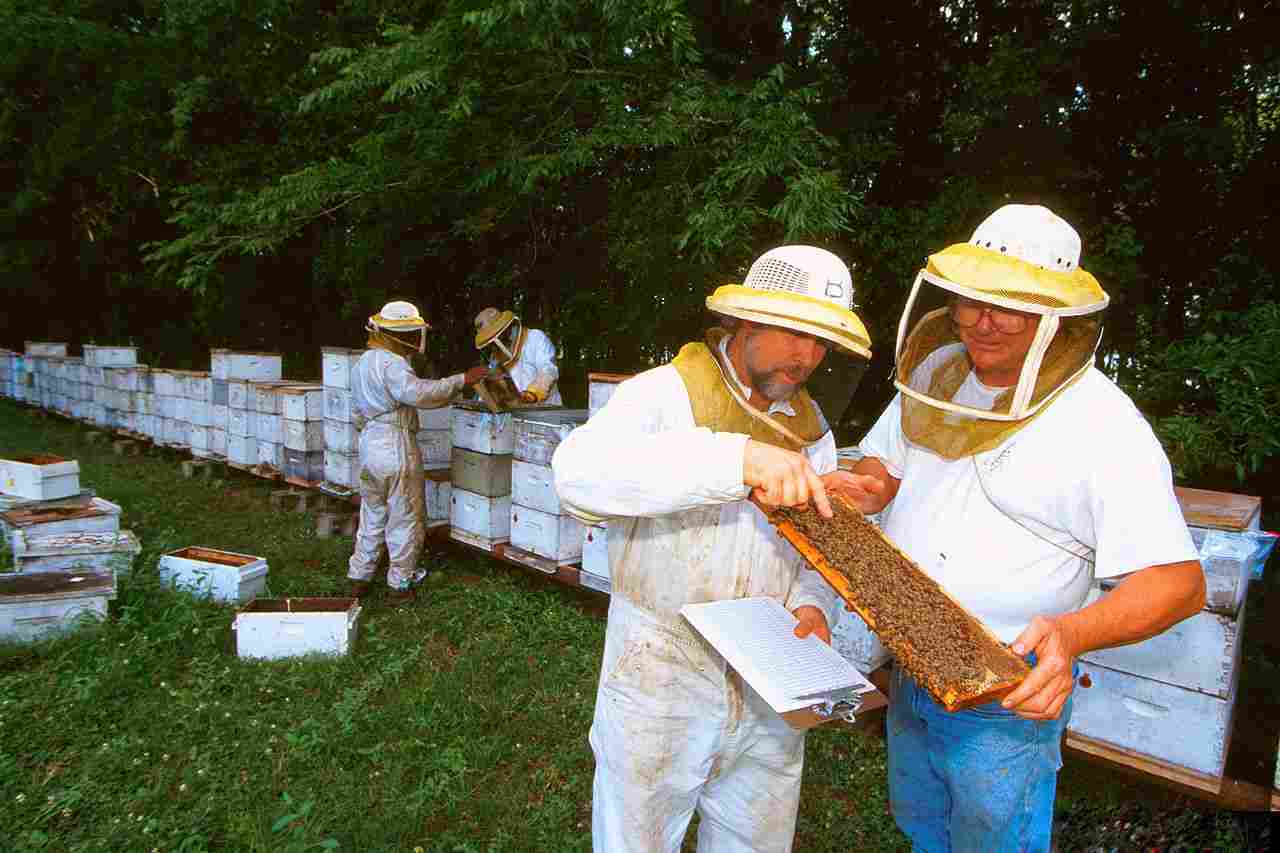
8. What Education Do You Need to Be a Beekeeper?
When it comes to pursuing a career in beekeeping, the educational requirements can vary depending on the specific field or industry. For those interested in working in apiaries or commercial beekeeping companies, a high school qualification is generally sufficient. These roles typically involve tasks such as hive maintenance, honey collection, and bee population management, which can be learned through on-the-job training and practical experience.
However, if you aspire to work in research institutions that focus on studying bee behavior and health, a bachelor’s degree in a related field, such as biology or entomology, may be required. These positions often involve conducting experiments, analyzing data, and collaborating with scientists and researchers to advance our understanding of bees and their impact on the environment.
Regardless of the educational path chosen, continuous learning and staying up-to-date with the latest advancements in beekeeping practices are essential for success in this field. Beekeepers can benefit from attending workshops, conferences, and specialized courses to enhance their knowledge and skills.
9. What do Beekeepers do in the Winter?
During the winter months, beekeepers take several important steps to ensure the well-being of their bee colonies. One key task is to keep the bee colonies warm by wrapping them with materials such as hay bale, batting, tar paper, or foam. This insulation helps to maintain a stable temperature inside the hive and protects the bees from the cold weather.
In addition to insulation, beekeepers also provide supplemental feeding for the bees. This includes providing them with sugar syrup and probiotic supplements to ensure they have enough food to sustain them throughout the winter when natural nectar sources are scarce.
Winter is also a time for beekeepers to prepare for the upcoming spring season. They may use this time to build new hives and frames, ensuring they have enough equipment ready for when the bee population expands in the warmer months.
Furthermore, beekeepers use the winter months as an opportunity to continue learning and improving their beekeeping skills. They may read books, attend workshops, or participate in online courses to deepen their knowledge and stay up-to-date with the latest advancements in beekeeping practices.
By taking these proactive measures during the winter, beekeepers can help their bee colonies survive the colder months and set them up for a successful and productive spring season.
10. What Skills do You Need to Be a Beekeeper?
To be a successful beekeeper, there are several key skills that you need to develop. These skills will not only help you effectively manage your bee colonies but also ensure the safety and well-being of both yourself and the bees. Here are some essential skills that every beekeeper should possess:
1. Basic Biology Knowledge
Understanding the biology of bees is crucial for beekeepers. This includes knowledge of the different bee species, their life cycles, and their behaviors. Having a solid understanding of bee biology will help you make informed decisions when it comes to hive management and beekeeping practices.
2. Tool and Equipment Handling
Beekeeping requires the use of various tools and equipment, such as smokers, hive tools, and protective gear. Being skilled in handling these tools safely and efficiently is essential for the smooth operation of your beekeeping activities.
3. Bee Hive Setup, Adjustment, and Wrapping
Setting up and maintaining beehives is a fundamental skill for beekeepers. This includes assembling hive components, adjusting hive frames, and ensuring proper hive ventilation. Additionally, during the winter months, beekeepers need to wrap their hives to provide insulation and protect the bees from the cold weather.
4. Recording and Observation
Keeping detailed records and regularly observing your bee colonies is essential for monitoring their health and productivity. This includes recording hive inspections, noting any changes in bee behavior, and tracking honey production. These records will help you identify any issues or trends and make informed management decisions.
5. Bee Handling
Working with bees requires a gentle touch and a calm demeanor. Beekeepers should be comfortable handling bees and know how to minimize stress for both themselves and the bees. Proper bee handling techniques will help prevent unnecessary harm to the bees and ensure a positive beekeeping experience.
6. Attention to Detail
Beekeeping requires attention to detail in all aspects of hive management. From monitoring bee health to maintaining hive equipment, being thorough and detail-oriented is crucial for successful beekeeping. This includes regularly checking for signs of disease, ensuring proper hive ventilation, and maintaining a clean and organized beekeeping area.
7. Reasoning and Critical Thinking
Beekeeping often presents challenges and requires problem-solving skills. Being able to analyze situations, think critically, and make informed decisions is essential for effective hive management. This includes identifying and addressing issues such as pest infestations, queenlessness, or honeybee swarming.
8. Adaptability to Changes in Bee Colony Conditions and Behaviors
Bee colonies are dynamic and can change rapidly. Beekeepers need to be adaptable and responsive to changes in colony conditions, such as population size, honey production, or disease outbreaks. Being able to adjust your management practices accordingly will help ensure the health and productivity of your bee colonies.
9. Calmness and Efficiency in Stressful Situations
Beekeeping can sometimes be challenging and stressful, especially during hive inspections or when dealing with aggressive bees. Remaining calm and composed in these situations is crucial for your safety and the well-being of the bees. Developing techniques to stay calm and work efficiently will help you navigate these challenging moments.
11. How Do You Get Bees for Beekeeping?
When starting beekeeping, there are several ways to acquire bees for your hive. One option is to buy bees from local beekeepers or apiaries. This allows you to get established colonies that are already thriving and ready to be transferred to your own hive. It’s important to choose reputable sources and ensure that the bees are healthy and disease-free.
Another method is to attract a wild swarm. Bees naturally swarm when their colony becomes overcrowded, and they are looking for a new home. By setting up swarm traps or bait hives in your area, you can attract these swarms and capture them for your own beekeeping purposes. This method requires patience and some knowledge of swarm behavior.
You can also obtain bees by splitting a hive with another apiarist. This involves dividing an existing hive into two or more separate colonies, each with its own queen. This method allows you to expand your beekeeping operation while also helping another beekeeper maintain their hive population.
Before acquiring bees, it’s important to first consult with local beekeepers and beekeeping associations. They can provide valuable guidance and advice on the best methods for obtaining bees in your specific area. They may also have recommendations for reputable bee suppliers or swarm catching techniques.
By exploring these different options and seeking advice from experienced beekeepers, you can successfully acquire bees for your beekeeping venture and start your journey as a beekeeper.
12. What Do You Feed Bees?
Bees require a source of food to survive and thrive in their hives. One common food source for bees is white table sugar, which can be fed to them in various ways. One method is to place sugar on in-trays or hive mats within their reach, allowing them to consume it dry. However, bees also need water to liquefy the sugar and make it easier for them to consume.
While bees will naturally source water from their surroundings, beekeepers can also provide a water source if possible. In some cases, beekeepers may choose to provide sugary water as an additional food source for their bees. This can be done by mixing sugar with water to create a solution that the bees can easily access and consume.
13. What is The Best Beehive for a Beginner?
The best beehive for a beginner is the Langstroth style beehive, in most cases. This type of beehive is highly recommended for beginners because it is very common and widely used in the beekeeping community. It is designed to be easy to maintain and manage, making it ideal for those who are just starting out.
One of the advantages of the Langstroth hive is that it can be easily installed in a backyard or small space. This makes it convenient for beekeepers who may not have access to large areas of land. Additionally, the Langstroth hive is easy to scale, allowing beekeepers to expand their operation as they gain more experience and confidence.
While the Langstroth hive is a popular choice for beginners, there are also other types of beehives that can be considered. Some alternatives include the top-bar hive and the Warre hive. These hives have their own unique features and advantages, so it’s worth exploring different options to find the best fit for your needs and preferences.
14. How Many Bees Do You Need to Start a Hive?
To start a hive, you typically need around 10,000 worker bees and one queen. The worker bees are the female bees responsible for tasks such as foraging, nursing the brood, and building and maintaining the hive. The queen bee is the reproductive female bee who lays eggs and ensures the survival of the colony.
Having a sufficient number of worker bees is crucial for the hive’s success. They perform various essential functions, including collecting nectar and pollen, defending the hive, and regulating the temperature inside. With a strong workforce, the hive can efficiently carry out its activities and thrive.
It’s important to note that the number of bees required to start a hive can vary depending on factors such as the bee species, the region, and the goals of the beekeeper. Some beekeepers may choose to start with a smaller number of bees and gradually build up the colony over time. Others may opt for larger initial populations to establish a robust hive from the start.
Ultimately, the number of bees needed to start a hive should be determined based on the specific circumstances and resources available to the beekeeper. It’s always advisable to consult with experienced beekeepers or local beekeeping associations to ensure the best practices are followed.
15. How Do You Attract Bees?
Attracting bees to your hive is essential for successful beekeeping. There are several effective methods to attract bees and encourage them to make your hive their home.
One way to attract bees is by providing a diverse and abundant source of nectar and pollen. Planting a variety of flowers, especially those that are native to your region, will attract bees with their enticing colors and fragrances. Be sure to choose flowers that bloom at different times throughout the year to provide a continuous food source for the bees.
Another method is to use pheromones or attractant lures specifically designed to attract bees. These products mimic the scent of a queen bee or the aroma of a thriving hive, which can entice bees to investigate and potentially establish a colony in your hive.
Lastly, creating a welcoming environment by providing a clean and well-maintained hive with suitable shelter and protection from predators will also attract bees. Bees are naturally drawn to safe and secure locations for their colonies.
16. How Do You Add Bees to a Hive?
To add bees to a hive, there are a few simple steps you can follow. First, make sure your hive is set up and ready to receive the bees. This includes ensuring that the frames are in place and that the hive is clean and secure.
Next, you will need to purchase or obtain a package of bees or a nucleus colony. These can be ordered from reputable bee suppliers or obtained from local beekeepers.
When you are ready to add the bees to the hive, it is best to do so in the late afternoon or early evening when the bees are less active. Gently shake or pour the bees into the hive, making sure to avoid injuring them.
Finally, close up the hive and leave the bees to settle in. It is important to check on the hive regularly to ensure that the bees are thriving and to address any issues that may arise.
17. How do I Get a Queen Bee to Start a Hive?
To get a queen bee to start a hive, there are a few steps you can follow. First, you need to obtain a queen bee. This can be done by purchasing a queen bee from a reputable bee supplier or by raising your own queen bee from a queen cell.
Once you have the queen bee, you will need to introduce her to the hive. This can be done by placing the queen bee in a queen cage and hanging it inside the hive. The worker bees will gradually release the queen from the cage and accept her as their new queen.
It is important to monitor the hive closely after introducing the queen bee to ensure that she is accepted and that the hive is thriving. If the queen is not accepted or if there are any issues with the hive, it may be necessary to take corrective action.
18. How do Beekeepers Get Queen Bees?
Beekeepers obtain queen bees through various methods. One common way is by purchasing queen bees from reputable suppliers. These suppliers specialize in breeding and raising queen bees for sale. Another method is by splitting a strong hive and allowing the bees to create a new queen from existing eggs or larvae.
Beekeepers can also raise their own queen bees by grafting larvae into special queen cups and providing them with the necessary conditions for development. Regardless of the method used, obtaining healthy and genetically diverse queen bees is crucial for the success of a beekeeping operation.
19. What are the Side Effects of Propolis?
Propolis, when used appropriately, is generally considered safe. However, it is important to be aware of potential side effects. One possible side effect of propolis is allergic reactions, particularly in individuals who are allergic to other bee products. It is recommended to exercise caution when using propolis if you have a known allergy to bee products.
In addition, lozenges containing propolis may cause irritation and mouth ulcers. This can be a discomforting side effect for some individuals. If you experience any adverse reactions or discomfort after using propolis, it is advisable to discontinue use and consult with a healthcare professional.
